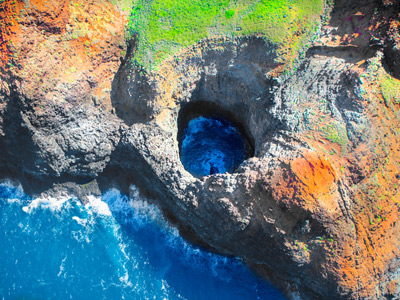
Ask the AI Tutor
Need help with The Rock Cycle? Ask our AI Tutor!
AI Tutor - Lucy
Connecting with Tutor...
Please wait while we establish connection

Play this quiz and see if you get all ten questions correct.
The Rock Cycle
This GCSE Geography quiz explores the rock cycle, showing how igneous, sedimentary, and metamorphic rocks are constantly changed by heat, pressure, weathering, and erosion.
1 .
Which of the following statements is NOT true?
Sedimentary rocks are usually formed under water
Metamorphic rocks have been melted
Igneous rocks are often associated with volcanoes
Metamorphic rocks can be made from igneous, sedimentary or other metamorphic rocks
It is important to realise that metamorphic rocks are NOT melted during their formation - if they were melted at any point, that would make them an igneous rock
2 .
At which type of plate boundaries are you most likely to find igneous rocks forming?
Conservative and destructive
Destructive and constructive
Constructive and conservative
They will form at all three types of plate boundary
These are the two places that molten magma reaches the surface of the Earth
3 .
Which rock type is formed by high pressures and temperatures?
Igneous
Metamorphic
Sedimentary
All three
They are formed in the roots of mountain ranges where temperatures and pressures are greatest
4 .
Which of the following statements is incorrect?
Igneous rocks are made from grains of other rocks that have been cemented together
Sedimentary rocks normally form in layers
Both metamorphic and sedimentary rocks can contain visible layers
Igneous and metamorphic rocks often contain crystals
Any crystals that you find in sedimentary rocks are held in place by surrounding particles of sediment and were formed at an earlier date than the rock. The crystals of igneous and metamorphic rocks are formed at the same time as the rocks and are surrounded by other crystals
5 .
Which word describes an ingneous rock that is formed deep within the crust of the Earth?
Extrusive
Intrusive
Extra-terrestrial
Intra-terrestrial
Granite is a good example of an intrusive igneous rock
6 .
Which of the following is the correct sequence that describes the formation of a sedimentary rock?
Suspension, deposition, compaction, cementation
Sedimentation, deposition, cementation, compaction
Suspension, compaction, cementation, deposition
Deposition, cementation, sedimentation, suspension
Sedimentation and deposition mean the same thing. Sediments are formed in layers which is why the majority of sedimentary rocks are layered
7 .
The timescale of the rock cycle is:
months
decades
millenia (a millenium is one thousand years)
millions of years
Rocks are millions of years old, some can be hundreds of millions of years old - very few rocks escape being changed by the rock cycle. The oldest rocks on Earth have been dated as being about 4 billion years old and were found in Canada. This means that they have been part of the rock cycle for almost as long as the Earth has existed!
8 .
In a sequence of sedimentary rock layers, where would you find the most recently formed rock?
It would be the lowest layer
It would be the middle layer
It would be the topmost layer
It is impossible to tell without carbon dating the rocks
Folding of rocks caused by tectonic movements can cause rock sequences to be turned upside-down! This can sometimes cause problems to geographers when they try to interpret the history of a mountain range
9 .
Which type of rock is made from molten magma that has cooled down and solidified?
Igneous
Metamorphic
Sedimentary
All three
They can form at the surface of the Earth or deep in the Earth's crust
10 .
Which of the following is NOT a type of weathering?
Saltation
Solution
Freeze-thaw
Exfoliation
Saltation is a method of transport of rock particles and is therefore erosion and not weathering
**Unlimited Quizzes Await You! 🚀**
Hey there, quiz champ! 🌟 You've already tackled today's free questions.
Ready for more?
Ready for more?
🔓 Unlock UNLIMITED Quizzes and challenge yourself every day. But that's
not all...
not all...
🔥 As a Subscriber you can join our thrilling "Daily Streak" against other
quizzers. Try to win a coveted spot on our Hall of Fame Page.
quizzers. Try to win a coveted spot on our Hall of Fame Page.
Don't miss out! Join us now and keep the fun rolling. 🎉
**Unlimited Quizzes Await You! 🚀**
Hey there, quiz champ! 🌟 You've already tackled today's free questions. Ready for more?
🔓 Unlock UNLIMITED Quizzes and challenge yourself every day. But that's not all...
🔥 As a Subscriber you can join our thrilling "Daily Streak" against other quizzers. Try to win a coveted spot on our Hall of Fame Page.
Don't miss out! Join us now and keep the fun rolling. 🎉






